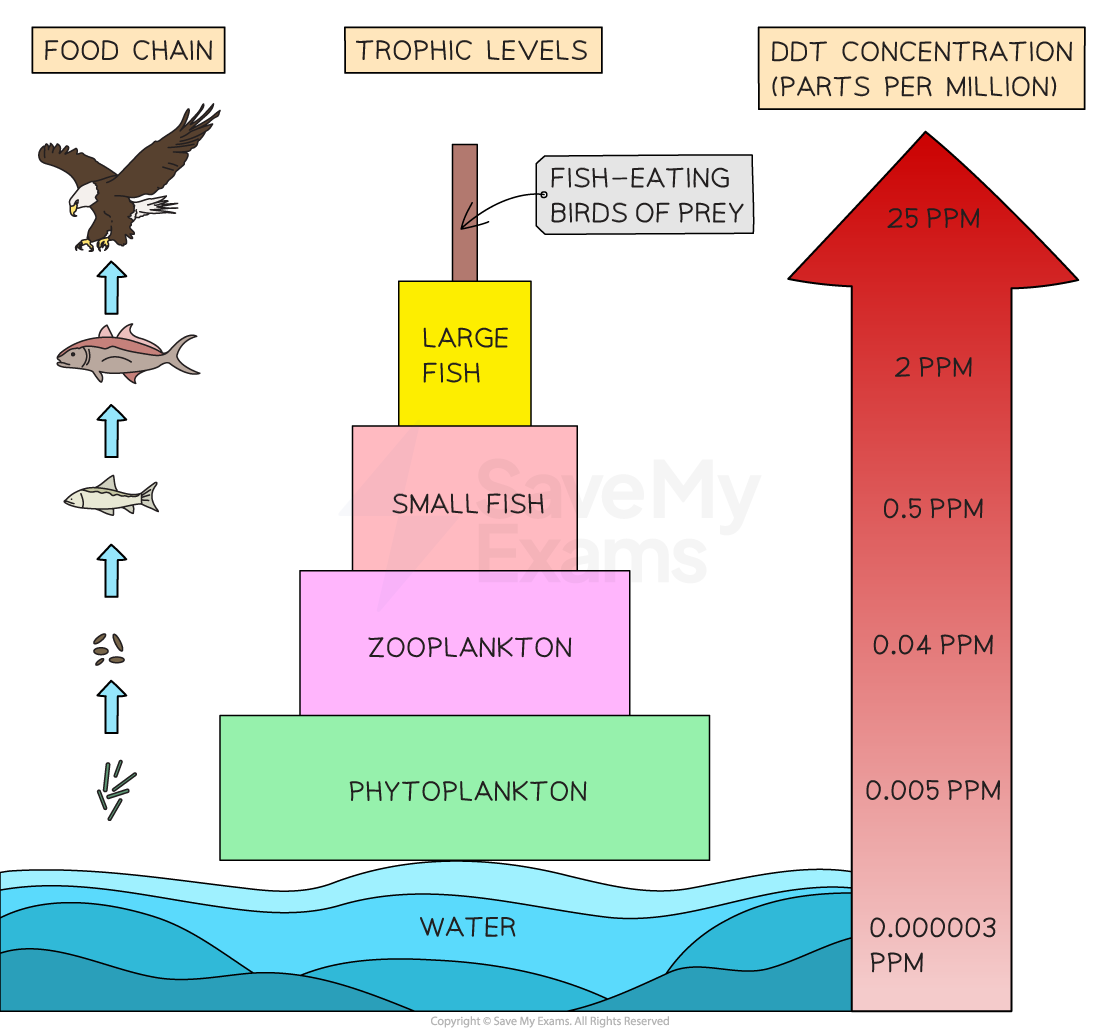Syllabus Edition
First teaching 2015
Last exams 2025
Effects of DDT on Animals (DP IB Environmental Systems & Societies (ESS)) : Revision Note
Effects of Using DDT
Dichlorodiphenyltrichloroethane (DDT) was widely used as a pesticide from the 1940s until it was banned in many countries in the 1970s due to its environmental and health impacts
It is an example of a conflict between the utility of a 'pollutant' and its effect on the environment
DDT is a powerful insecticide, so it was effective in controlling insect-borne human diseases, such as malaria (transmitted by mosquitoes) and typhus (transmitted by lice), particularly in tropical regions
However, it was discovered that DDT was also causing harm to non-target organisms, such as birds and fish, through biomagnification
This means that top predators, such as eagles and falcons, were receiving high doses of DDT, which caused them to lay eggs with thin shells, resulting in reproductive failure
The conflict between the utility of DDT in controlling diseases and its environmental impacts led to a ban on its use in many countries, including the United States
Its use has been restricted under the Stockholm Convention on Persistent Organic Pollutants
The use of DDT remains controversial, with some arguing that it should be allowed for use in disease control in areas where it is the most effective option, while others argue that the environmental impacts are too significant to justify its use
DDT highlights the importance of considering the potential environmental impacts of any chemical or substance before it is used, particularly when it will be widely distributed into the environment
It also shows that sometimes a trade-off must be made between the benefits and the negative impacts of a substance

Through the process of biomagnification, the concentration of DDT in the tissues of organisms increases at successively higher trophic levels in a food chain

You've read 0 of your 5 free revision notes this week
Sign up now. It’s free!
Did this page help you?

